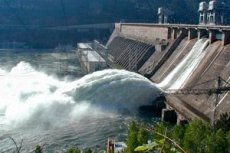New publications
Hydropower plants are partly to blame for global warming
Last reviewed: 02.07.2025

All iLive content is medically reviewed or fact checked to ensure as much factual accuracy as possible.
We have strict sourcing guidelines and only link to reputable media sites, academic research institutions and, whenever possible, medically peer reviewed studies. Note that the numbers in parentheses ([1], [2], etc.) are clickable links to these studies.
If you feel that any of our content is inaccurate, out-of-date, or otherwise questionable, please select it and press Ctrl + Enter.

Humanity has been using dams and reservoirs for quite some time to generate hydroelectric power, power irrigation systems, etc. But, apparently, such methods have a negative impact on the environment and may be one of the causes of global warming.
Scientists have long been interested in the carbon footprint that remains as a result of human technogenic activity throughout the entire period of development. Reservoirs Humans began using reservoirs more than 10 years ago, and most studies focus on reservoirs that are used to produce electrical energy. In Washington, a team of researchers conducted a study that examined reservoirs, analyzed them, and the results alarmed scientists.
Molecular analysis has revealed that power plants produce more than 1% of the carbon pollution in the air around reservoirs, a figure several times higher than previous estimates.
One of the gases that causes the greenhouse effect on our planet is methane, its ability to increase global warming is almost 90 times greater than the similar ability of carbon dioxide. Scientists believe that reservoirs have such an effect on the atmosphere due to their geological structure. If carbon-rich soils are flooded with water, they naturally begin to run out of oxygen, as a result of which microorganisms appear that feed on carbon dioxide. A by-product of the life activity of these microorganisms is methane, the same microorganisms live in swamps - this is why such places usually have a rotten smell, which appears as a result of the processing of carbon dioxide into methane by bacteria.
According to preliminary estimates, 25% more methane is released into water bodies than was previously believed, and this is already a real problem, especially recently, when active construction of dams is underway.
The discovery is serendipitous and timely, as world leaders are set to enact a treaty that will launch a series of carbon-reduction programs, said Bridget Deamer, the study's lead author. It is possible that such moves are hasty and could backfire. But in any case, hydroelectric power plants cannot be shut down anytime soon because they are so important for generating energy.
This study shows that both environmentalists and energy workers have a new global challenge, the solution to which could require a huge amount of resources and time.
It is worth noting that similar conclusions were made earlier regarding wind power plants. Scientists observed the temperature of the earth's surface near wind power plants for 9 years, also using satellite data as a basis. As a result, it was found that the temperature near the operating power plants rose by 0.7 0 during the observation period, with warming occurring especially at night.
 [ 1 ]
[ 1 ]
